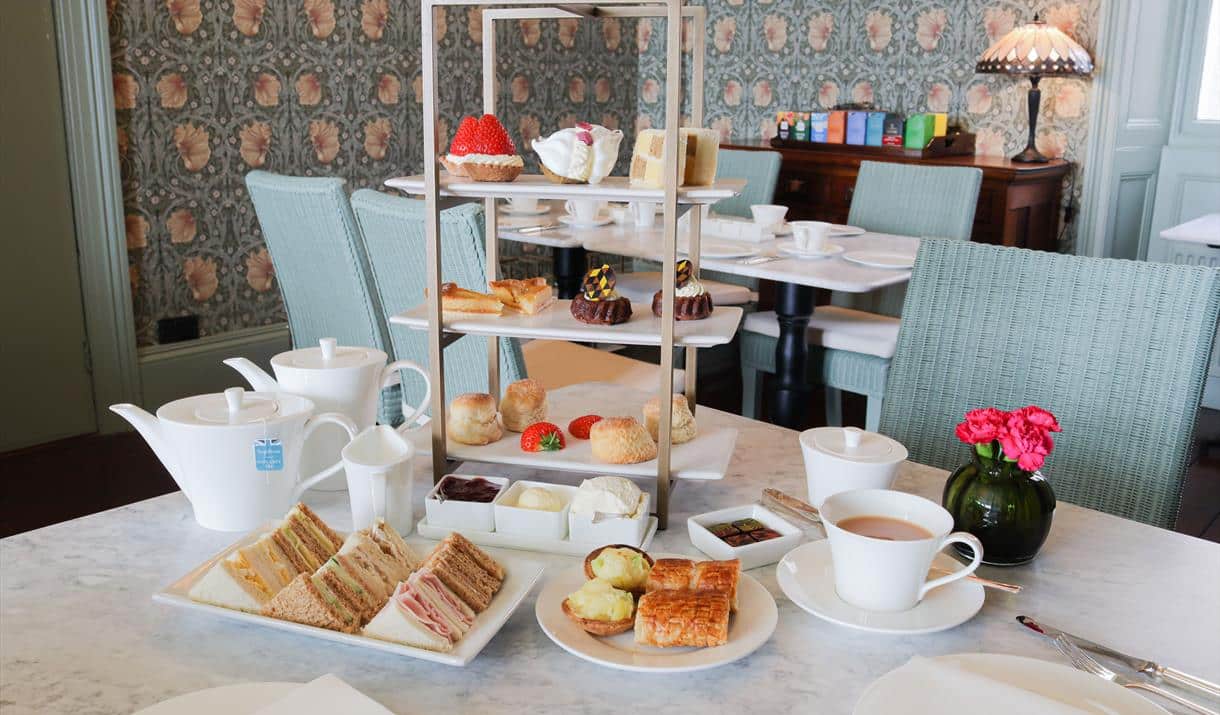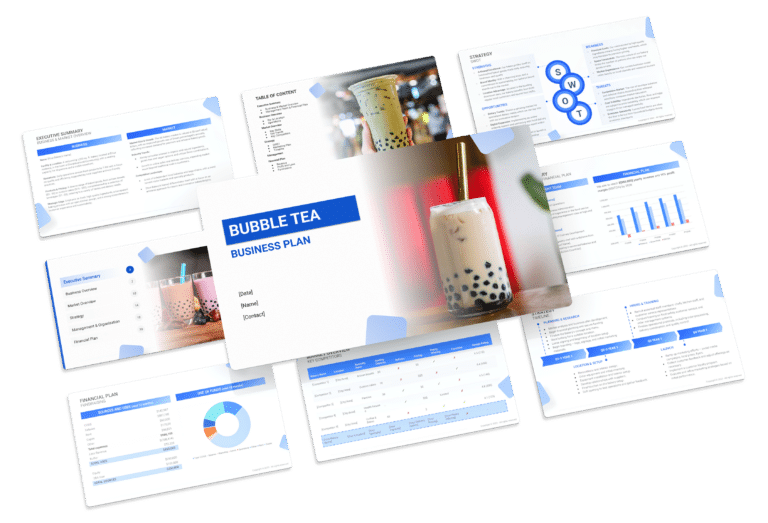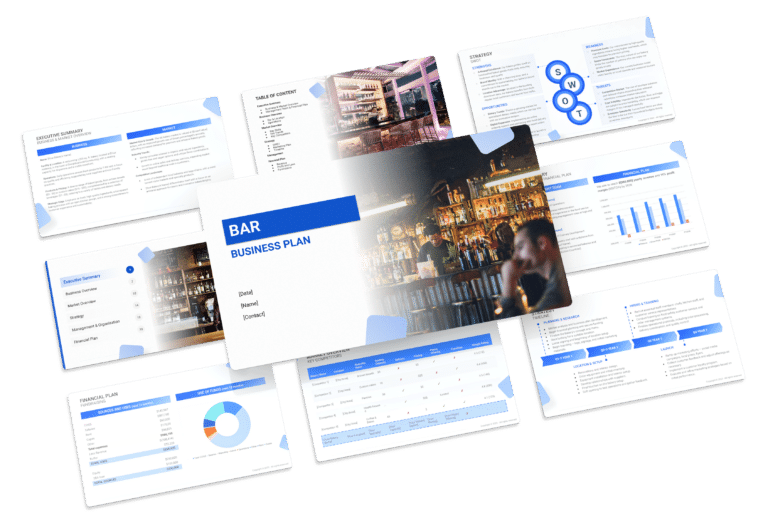Sales & Marketing Plan for a Tea Room

A successful tea room isn’t just about serving exquisite teas; it also relies on effective marketing and sales strategies. This guide aims to help create a comprehensive sales and marketing plan tailored to the business plan of a tea room.
We’ll begin with a market analysis to understand competitors and the needs of tea enthusiasts. Next, we’ll fortify your tea room’s brand identity and strategic positioning.
Following this, we’ll explore effective marketing channels to engage potential tea enthusiasts, along with diverse sales strategies to maximize revenue generation.
Market Analysis
Competitive Analysis
- Identify Tea Rooms: Identifying and analyzing other tea rooms in your vicinity is a crucial step in understanding the market landscape. Observing their offerings, ambiance, pricing, customer service, and promotional tactics provides insights into their strengths and weaknesses.
- SWOT Analysis: Conduct a SWOT analysis to assess your tea room’s Strengths, Weaknesses, Opportunities, and Threats concerning competitors. Identify areas for differentiation and enhancement.
Target Audience Profiling
- Demographic and Psychographic Details: Understanding your audience is fundamental for tailoring your offerings and marketing messages. Beyond demographics such as age, gender, and income, delve deeper into psychographic details. Are your patrons seeking a serene environment for relaxation, a place for social gatherings, or a haven for tea enthusiasts?
- Customer Needs: By recognizing customer needs and expectations, you can curate an experience that resonates with their desires. This may involve offering an extensive range of teas, and delectable pastries, or hosting events aligned with their preferences.
Branding and Positioning
Brand Identity Development
- Establish a Compelling Story: Crafting a compelling narrative around your tea room’s inception can captivate customers. Share stories about your journey, the inspiration behind the tea room, or the vision you aim to manifest. This narrative forms an emotional connection with customers, making your tea room more than just a place for tea but an experience they seek.
- Visual Elements: Visual elements play a crucial role in brand identity. The logo, color schemes, interior design, and decor collectively contribute to the ambiance you want to create. Whether it’s a cozy vintage setting or a modern, minimalist environment, consistency in visual elements reinforces brand recall.
Market Positioning Strategy
- Define Unique Offerings: Your tea room’s unique offerings should shine through in your marketing. Whether it’s rare tea blends sourced globally, homemade pastries using secret family recipes, or a tranquil ambiance reminiscent of traditional tea houses, highlighting these aspects is key.
- Positioning Statement: A clear positioning statement encapsulating what sets your tea room apart aids in guiding marketing strategies and business decisions. Emphasize this unique value proposition in all communication channels to create a distinctive brand image.
Marketing Channels
Digital Marketing
- Social Media Engagement: Engaging customers through digital platforms is essential in today’s market. Social media serves as a dynamic space to showcase your tea room’s ambiance, various tea blends, brewing methods, and customer experiences. Engage with your audience by sharing interesting tea-related content, stories, and interactive posts.
- Email Marketing: Email marketing allows direct communication with patrons. Offer exclusive deals, behind-the-scenes glimpses, or brewing tips to entice them. A well-designed, user-friendly website is the digital storefront for your tea room.
- Website Optimization: Create a user-friendly website highlighting your tea offerings, events calendar, reservation options, and a blog with tea-related articles. Optimize for local SEO to increase visibility for tea enthusiasts in your area.
Local Advertising
Establishing strong ties within the community can significantly enhance local engagement and attract customers to your restaurant.
- Flyers and Local Print: Amidst the digital sphere, traditional advertising remains impactful. Design visually appealing flyers and adverts for local magazines, newspapers, or community bulletins.
- Tea Tastings and Events: Host tea-tasting sessions, workshops, or themed events at your tea room. Collaborate with local influencers or bloggers for event promotions.
- First-Time Visitor Incentives: Incentivize trial visits by offering special discounts for first-time diners. Provide introductory offers like a complimentary appetizer or a discount on the first meal to encourage new customers to experience the authentic French cuisine your restaurant offers.
Partnerships and Promotions
- Collaborative Partnerships: Collaborating with complementary businesses like bakeries, wellness centers, or book clubs can widen your audience reach. Joint events, cross-promotions, or exclusive offers can attract new customers and foster community connections.
- Special Promotions: Special promotions, limited-time offers, or loyalty programs incentivize repeat visits and referrals. Consider launching seasonal blends or ‘Tea of the Month’ subscriptions to keep your offerings fresh and exciting.
Sales Channels
Efficient sales channels enhance revenue and customer satisfaction, ensuring a delightful dining experience at your restaurant.
In-Room Sales Strategies
- In-Restaurant Upselling: Train staff to suggest additional offerings that enhance the dining experience, such as pairing suggestions for entrees, upgrades to premium wines, or specialty desserts. By recommending complementary items, you can increase the overall value of each customer’s visit.
- Celebratory Packages: Introduce celebratory packages tailored for special occasions like ‘Anniversary Dinners’ or ‘Birthday Celebrations.’ These packages could include complimentary desserts, customized menus, or personalized services, adding a memorable touch to important events for your patrons.
- Additional Offerings: Consider offering unique services or experiences like exclusive chef’s table dinners, themed tasting menus, or curated wine pairing events to increase per-customer spending. Providing such exclusive experiences can attract discerning customers seeking distinctive dining experiences.
Online Sales and Services
- Online Reservation System: Online reservation systems streamline the booking process for customers. Offering incentives such as free pastries or priority seating for online reservations can incentivize customers to book in advance.
- E-commerce for Tea and Merchandise: Sell exclusive tea blends, teapots, or curated gift baskets online to extend your reach beyond walk-in customers.
Membership and Loyalty Programs
- Membership Benefits: Creating membership tiers with exclusive benefits such as discounts, priority bookings, or members-only events encourages customer loyalty.
- Loyalty Rewards: Implementing digital loyalty programs where customers accumulate points for every purchase, redeemable for free teas, merchandise, or event tickets, incentivizes repeat visits.





